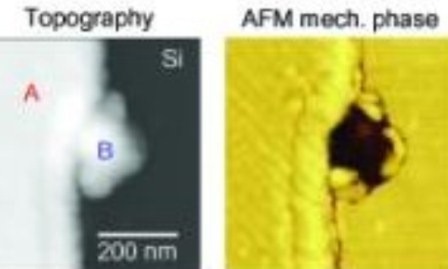Nano-FTIR enables nanoscale chemical identification
30 Jul 2012
An optical technique that combines s-SNOM and FTRI could significantly improve non-invasive chemical mapping of materials.
An ultimate goal in modern chemistry and materials science is the non-invasive chemical mapping of materials with nanometer scale resolution.
A variety of high-resolution imaging techniques exist, however their chemical sensitivity cannot meet the demands of modern chemical nano-analytics.
Optical spectroscopy, on the other hand, offers high chemical sensitivity but its resolution is limited by diffraction to about half the wavelength, thus preventing nanoscale resolved chemical mapping.
But nanoscale chemical identification and mapping of materials has now becomes possible with nano-FTIR, an optical technique that combines scattering-type scanning near-field optical microscopy (s-SNOM) and Fourier transform infrared (FTIR) spectroscopy.
By illuminating the metalised tip of an atomic force microscope (AFM) with a broadband infrared laser, and analysing the backscattered light with a specially designed Fourier Transform spectrometer, researchers at nanoGUNE demonstrated local infrared spectroscopy with a spatial resolution of less than 20 nm.
“Nano-FTIR thus allows for fast and reliable chemical identification of virtually any infrared-active material on the nanometer scale”, says Florian Huth, who performed the experiments.
An important aspect of enormous practical relevance is that the nano-FTIR spectra match extremely well with conventional FTIR spectra, while the spatial resolution is increased by more than a factor of 300 compared to conventional infrared spectroscopy.
“The high sensitivity to chemical composition combined with ultra-high resolution makes nano-FTIR a unique tool for research, development and quality control in polymer chemistry, biomedicine and pharmaceutical industry” concludes Rainer Hillenbrand, leader of the Nanooptics group at nanoGUNE.
NanoGUNE, the Basque nanoscience and nanotechnology research center, was established in 2007 as a spin-off from the Max Planck Institute of Biochemistry and is the first supplier of commercial scattering-type near-field optical microscopes.



